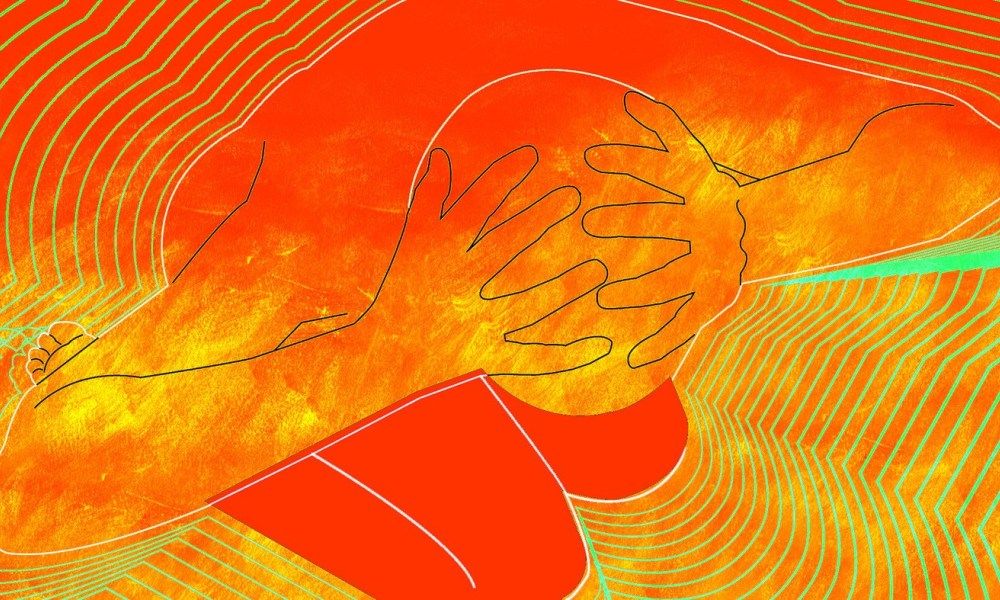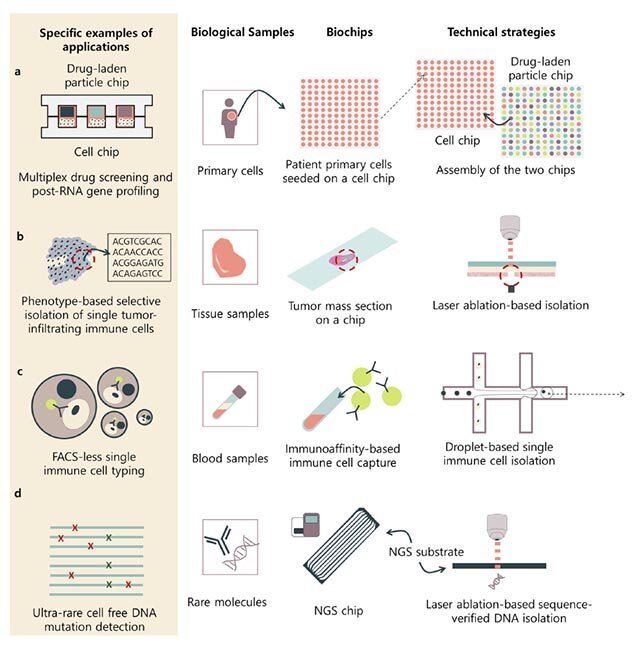Page 8659
Jun 25, 2019
‘Extinct’ Species Discovered Alive And Well In ‘Lost City’ In Honduras Rainforest
Posted by Genevieve Klien in categories: biological, government
Around the ruins and dense rainforest of a mysterious “lost city” in Honduras, researchers have discovered a treasure trove of biodiversity, including numerous species once thought to be extinct and others previously unknown to science.
As detailed in a new report, a recent expedition by Conservation International’s Rapid Assessment Program (RAP) and the Government of Honduras headed deep into a previously unexplored corner of the forest around Ciudad Blanca, in La Mosquitia, Honduras.
Their biological assessment documented 246 species of butterflies and moths, 30 bats, 57 amphibians and reptiles, as well as numerous fish, mammals, and insects. At least 22 of these species had never been recorded in Honduras before.
Jun 25, 2019
Magnitude 7.5 Earthquake Strikes Indonesia
Posted by Genevieve Klien in category: futurism
STORY SUMMARY
HONOLULU, Hawaiʻi — The Pacific Tsunami Warning Center reports that a strong earthquake has occurred just after 5 p.m. HST in the vicinity of Indonesia, but did not generate a tsunami threat to Hawaiʻi.
Jun 25, 2019
LightSail 2 Launches to Space to Soar on the Power of Sunshine
Posted by Genevieve Klien in category: space
The Planetary Society’s second solar sail will attempt to use sunlight to fly through space.
Jun 25, 2019
Scientists are testing new drugs that could prevent migraine attacks!
Posted by Paul Battista in categories: biotech/medical, neuroscience
Individuals that are experiencing frequent migraines, may soon receive access to a new class of medications.
A pair of large studies showed that two drugs have the ability to reduce the frequency of the migraine attacks, without any side effects. The researchers report in the New England Journal of Medicine that the drugs offer the first ever migraine treatment that is aimed at the disorder itself, instead of the symptoms.
Current migraine treatments consist of drugs that are designed to treat epilepsy, depression and high blood pressure. Peter Goadsby, an author of one of the studies in question and a professor at King’s College in London says that they give the patients a choice between antidepressants that will make them sleepy, and a beta blocker, which will make them feel tired.
Jun 25, 2019
Designing light-harvesting organic semiconductor microcrystals with wavelength-tunable lasers
Posted by Quinn Sena in categories: chemistry, computing, nanotechnology, physics
Organic solid-state lasers are essential for photonic applications, but current-driven lasers are a great challenge to develop in applied physics and materials science. While it is possible to create charge transfer complexes (i.electron-donor-acceptor complexes among two/more molecules or across a large molecule) with p-/n- type organic semiconductors in electrically pumped lasers, the existing difficulties arise from nonradiative loss due to the delocalized states of charge transfer (CT). In a recent report, Kang Wang and a team of researchers in the departments of chemistry, molecular nanostructure and nanotechnology in China demonstrated the enduring action of CT complexes by exciton funneling in p-type organic microcrystals with n-type doping.
They surrounded locally formed CT complexes containing narrow bandgaps with hosts of high levels of energy to behave as artificial light-harvesting systems. They captured the resulting excitation light energy using hosts to deliver to the CT complexes for their function as exciton funnels in order to benefit lasing actions. Wang et al. expect the preliminary results to offer in depth understanding of exciton funneling in light-harvesting systems to develop high-performance organic lasing devices. The new results are now available on Science Advances.
Organic semiconductor lasers that function across the full visible spectrum are of increasing interest due to their practical applications from multiband communication to full-color laser displays. Although they are challenging to attain, electrically pumped organic lasers can advance the existing laser technology to rival organic light-emitting diodes.
Jun 25, 2019
Inside Cryonics: Will These Bodies Come Back From Death?
Posted by Paul Battista in categories: biotech/medical, cryonics, life extension

Until the day he died, in 2011, Robert Ettinger hoped humanity would figure out a way to cheat death. Today, his body is stored in a chamber filled with liquid nitrogen and frozen to −196 °C. He lies in cryopreservation at the Cryonics Institute in Michigan—which he founded—alongside his late mother, his first and second wives, and 150 other deceased.
Ettinger, known as the “father of cryonics,” popularized the idea in his 1962 book The Prospect of Immortality. (Isaac Asimov, the renowned biochemist and science-fiction writer, helped Ettinger publish the book.) Cryonicists believe that technology will sufficiently advance to a point where cells can be rejuvenated and the aging process reversed. In practice, legally deceased patients arrive at a cryonics facility packed in ice. Cryonicists interrupt the dying process by draining the blood from the body and perfusing the corpse with a mixture of anti-freeze and organ-preserving chemicals, known as cryoprotective agents. The body is then transformed into a vitrified state and lowered into a below-freezing chamber filled with liquid nitrogen, where it lies in wait for a future generation to restore it.
Continue reading “Inside Cryonics: Will These Bodies Come Back From Death?” »
Jun 25, 2019
Biochip advances enable next-generation sequencing technologies
Posted by Quinn Sena in categories: biotech/medical, innovation
Biochips are essentially tiny laboratories designed to function inside living organisms, and they are driving next-generation DNA sequencing technologies. This powerful combination is capable of solving unique and important biological problems, such as single-cell, rare-cell or rare-molecule analysis, which next-generation sequencing can’t do on its own.
Now that the scaling and throughput power of biochip technologies has emerged, the next trend in biochips will involve being capable of providing applications across a wide spectrum—from identifying rare bacterium to population-based clinical studies.
In APL Bioengineering a group of researchers from Seoul National University explore the role advancements in biochip technology are playing in driving groundbreaking scientific discoveries and breakthroughs in medicine via next-generation sequencing, aka high-throughput sequencing.
Jun 25, 2019
PizzaGAN gets the picture on how to make a pizza
Posted by Quinn Sena in category: robotics/AI
Is nothing sacred? Who would dare to even attempt to talk about a machine-learning experiment that results in the perfect (gasp) pizza? It is difficult to contemplate, but a research quintet did not shy away from trying, and they worked to teach a machine how to make a great pie.
Say hello to PizzaGAN, a compositional layer-based generative model that was aimed to mirror the step-by-step procedure of pizza-making.
Their goal was to teach the machine by building a generative model that mirrors an ordered set of instructions. How they proceeded: “Each operator is designed as a Generative Adversarial Network (GAN). Given only weak image-level supervision, the operators are trained to generate a visual layer that needs to be added to or removed from the existing image. The proposed model is able to decompose an image into an ordered sequence of layers by applying sequentially in the right order the corresponding removing modules.”
Jun 25, 2019
Feeling the strain: Shear effects in magnetoelectric switching
Posted by Quinn Sena in categories: computing, mobile phones
The high resolution and wealth of data provided by an experiment at Diamond can lead to unexpected discoveries. The piezoelectric properties of the ceramic perovskite PMN-PT (0.68Pb(Mg1/3Nb2/3)O3–0.32PbTiO3) are widely used in commercial actuators, where the strain that is generated varies continuously with applied voltage. However, if the applied voltage is cycled appropriately then there are discontinuous changes of strain. These discontinuous changes can be used to drive magnetic switching in a thin overlying ferromagnet, permitting magnetic information to be written electrically. An international team of researchers used beamline I06 to investigate a ferromagnetic film of nickel when it served as a sensitive strain gauge for single-crystal PMN-PTheir initial interpretation of the results suggested that ferroelectric domain switching rotated the magnetic domains in the film by the expected angle of 90°, but a closer examination revealed the true picture to be more complex.
Their work, recently published in Nature Materials, shows that the ferroelectric domain switching rotated the magnetic domains in the film by considerably less than 90° due to an accompanying shear strain. The findings offer both a challenge and an opportunity for the design of next-generation data storage devices, and will surely be relevant if the work is extended to explore the electrically driven manipulation of more complex magnetic textures.
Some solid materials develop electrical charge in response to an applied mechanical stress. This piezoelectric effect means that certain crystals can be used to convert mechanical energy into electricity or vice-versa, and piezoelectric materials are used in a variety of technologies, including the automatic focusing of cameras in mobile phones. For these applications, the strain varies continuously with applied voltage, but cycling the applied voltage can lead to discontinuous changes of strain due to ferroelectric domain switching. These discontinuous changes in strain can be used to drive magnetic switching in a thin ferromagment film, such that data can be written electrically, and stored magnetically.
















